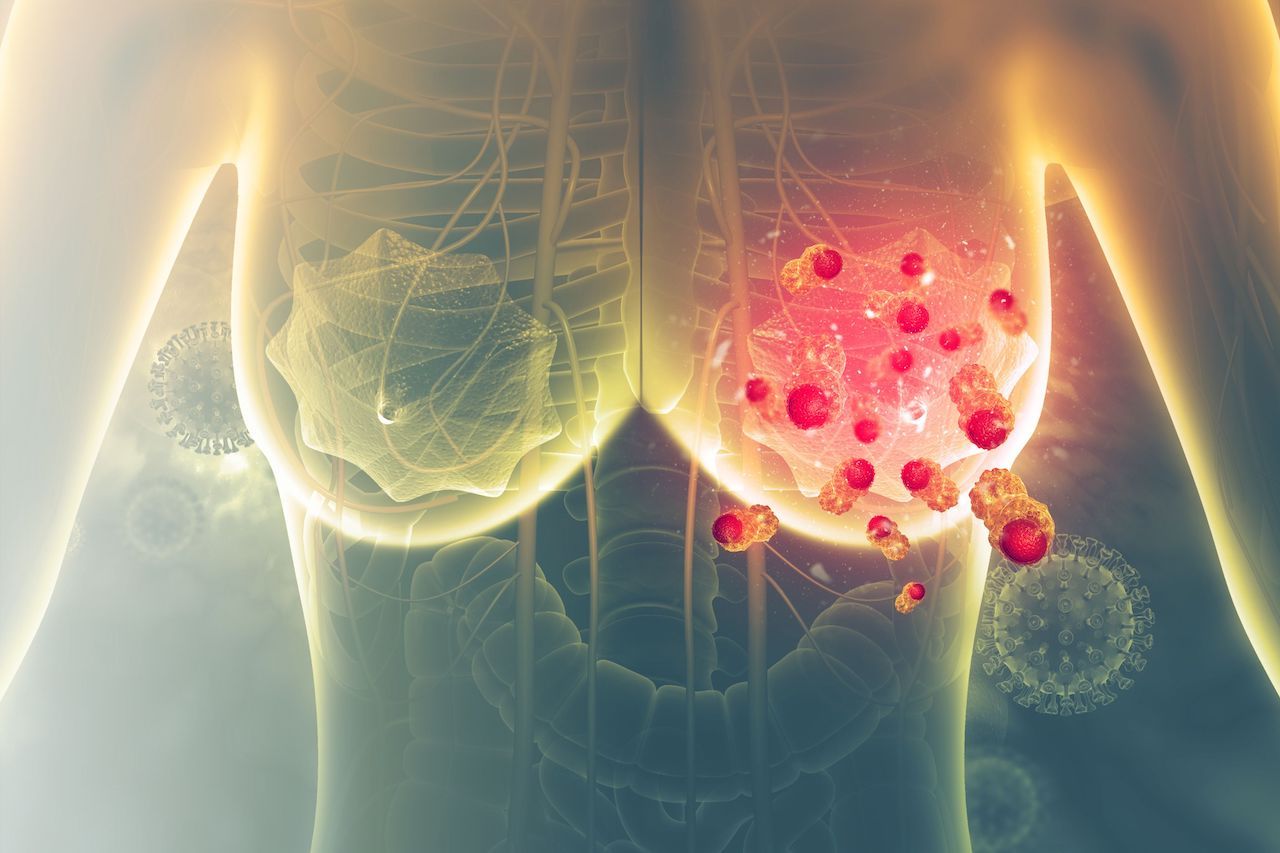Article
Male Breast Cancer Survival Similar to That in Women Despite Treatment Variation
Author(s):
Because male breast cancer is such a rare disease, few strides have been made that convey advantages in its detection, incidence, and mortality. Most treatment guidelines have been extracted from studies performed among female patients.
Just 1% to 2% of all breast cancers diagnosed each year occur among male patients. As a result, most treatment guidelines have been extracted from studies performed among female patients, despite male patients often presenting with larger tumors and more frequent lymph node involvement, note the authors of a recent study published in the European Journal of Breast Health.
This lack of evidence on the best management strategies for male-specific treatment led the authors to conduct their retrospective chart review on 45 male patients with nonmetastatic breast cancer matched in a 1:2 ratio to 75 female patients based on age, year, and stage at diagnosis, as well as estrogen receptor, progesterone receptor, and human epidermal growth factor receptor 2 status.
All of the study participants presented with stage I to III disease at The Ohio State University Comprehensive Cancer Center between 1994 and 2014. Median ages at diagnosis were similar among the groups, at 63.8 (range, 43.0-79.4) years for the men and 63.1 (range, 42.0-79.0) years for the women, as were the median treatment durations of 59.7 (range, 7.7-186.1) and 59.5 (range, 0.4-12.3) months, respectively.
Results show that a majority of both groups presented with stage II disease and grade 2 tumors, respectively, but these totals were higher among the men:
- Male patients: 53.3% and 64.4%
- Female patients: 49.3% and 46.7%
Treatment modalities different significantly among the groups, however. Sixty-three percent more men underwent mastectomies compared with the women, at 97.8% and 60.0% (P < .001), respectively, and none of the men had breast-conserving surgery vs 36.0% of the women.
The male patients were also less likely to receive radiotherapy following a mastectomy (22.7% vs 44.4%; P = .030) and to have chemotherapy (42.2% vs 65.3%; P = .013), but they were significantly more likely to receive tamoxifen as endocrine therapy compared with the female group (84.4% vs 25.3%; P < .0001).
For overall survival (P = .054) and distant disease-free survival (P = .045), the men came out slightly ahead if they received adjuvant chemotherapy, but there were no differences between the groups if the patients did not receive chemotherapy (P = .172 and P = .102, respectively). Mean (SD) recurrence scores, as measured by modified Magee scores, were also similar, coming in at 20.3 (6.3) (range, 7.5-31.2) for the men and 19.8 (8.1) (range, 8.8-39.4; P = .822) for the women, although a recurrence score of at least 31 led to significantly lower 5-year survival among the men.
“Results highlight that there is no significant difference in overall or distant disease-free survival, despite some differences in management of the disease between male and well-matched female breast cancer patients,” the authors concluded. “This suggests that breast cancer specific factors rather than gender play a role in patient outcome and early detection and appropriate treatment are critical factors affecting survival of male patients with breast cancer.”
Additional studies are needed that cover larger matched patient cohorts, the authors noted, and focus on more formal comparisons between male patients with breast cancer and female patients.
Reference
Liu J, Suresh A, Palettas M, et al. Features, outcomes, and management strategies of male breast cancer: a single institution comparison to well-matched female controls. Eur J Breast Health. 2020;16(3):201-207. doi:10.5152/ejbh.2020.5536





